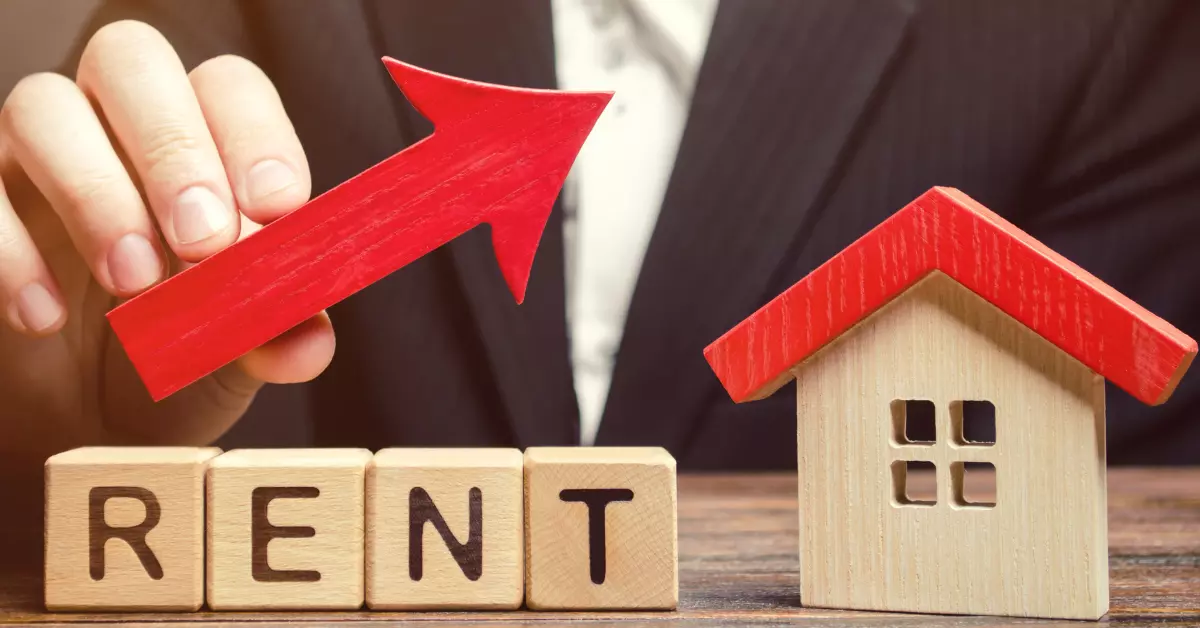How Many Landlords in the US?
Curious about the number of landlords in the U.S.? Whether you’re a property owner, a tenant, or just a stats junkie, we’ve got you covered
Dive into our data-driven analysis to understand the scope and scale of the American rental market. Get ready to explore some eye-opening facts and trends.

How Many Landlords in the US?
There are approximately 22 million landlords in the United States, owning around 48.5 million rental units. Of these properties, about 14.3 million (or 29.5%) were owned by individual landlords, who typically own one or two properties. The rest were owned by various types of businesses, organizations, or government entities.
The table below shows the breakdown of property ownership by landlord category:
| Property Owner | Number of Properties | % of Residential Properties |
|---|---|---|
| Individual | 14,282,000 | 71.6% |
| LLP, LP, or LLC | 3,238,000 | 16.2% |
| Trustee | 718,000 | 3.6% |
| Real Estate Corporation or REIT | 427,000 | 2.1% |
| Nonprofit Organization | 155,000 | 0.8% |
| Housing Cooperative or Tenant in Common | 105,000 | 0.5% |
| General Partnership | 78,000 | 0.4% |
| Other | 262,000 | 1.3% |
| Unreported | 690,000 | 3.5% |
| Total Residential Rental Properties | 19,955,000 | 100% |
California has the most rental properties (2.7 million), followed by Texas (1.7 million) and Florida (1.5 million). The states with the least rental properties are Wyoming (32,000), Vermont (37,000), and Alaska (40,000).
Rental Property Types In The Us
Rental properties can be classified into different types, based on the number of units and the intended use. Some of the most common types of rental properties in us include:
- Single-family homes
- Multi-family homes
- Condos
- Apartments
- Townhouses
- Vacation rentals
- Commercial properties
Trends And Statistics In Rental Property Market
According to Statista, the rental vacancy rate in us was 6. 4% in q4, which is a slight decrease from the previous year. Additionally, the median monthly rent for one-bedroom apartments in us was around $1,100.
These statistics indicate that the rental market is stable and growing in us. Moreover, there is a rising trend of millennials and gen z preferring to rent properties instead of owning them.
As a result, the demand for rental properties is increasing, making it a lucrative investment option for those interested in becoming landlords.

Types of Landlords in the US
As we saw earlier, there are different types of landlords in the US based on who owns and manages the rental properties. Here are some of the main types:
Individual Landlords
Individual landlords are people who own one or more rental properties as a personal investment or a source of income.
They may live in one of their properties or elsewhere. They are responsible for finding tenants, collecting rent, maintaining the property, paying taxes and expenses, and complying with laws and regulations.
Individual landlords make up the majority of landlords in the US. They tend to own single-family homes or small buildings with fewer than 10 units.
They usually manage their properties themselves or hire a property manager to help them.

Some advantages for renters who rent from individual landlords are:
- They may have more flexibility and personal interaction with their landlord
- They may have lower rent or fees than corporate landlords
- They may have more opportunities to negotiate terms or request repairs
Some disadvantages for renters who rent from individual landlords are:
- They may have less stability and security than corporate landlords
- They may have less professionalism and responsiveness from their landlord
- They may have more disputes or conflicts with their landlord
Corporate Landlords
Corporate landlords are companies that own and manage multiple rental properties as a business.
They may be real estate corporations, limited liability companies (LLCs), limited partnerships (LPs), or real estate investment trusts (REITs).
They have professional staff and systems to handle all aspects of renting, such as marketing, leasing, maintenance, accounting, and legal issues.
Corporate landlords make up a significant portion of landlords in the US. They tend to own large buildings or complexes with many units.
They usually manage their properties through a property management company or a subsidiary.
Some advantages for renters who rent from corporate landlords are:
- They may have more stability and security than individual landlords
- They may have more professionalism and responsiveness from their landlord
- They may have more amenities and services than individual landlords
Some disadvantages for renters who rent from corporate landlords are:
- They may have less flexibility and personal interaction with their landlord
- They may have higher rent or fees than individual landlords
- They may have less opportunities to negotiate terms or request repairs
Government-Owned Rentals
Government-owned rentals are properties that are owned and subsidized by federal, state, or local governments.
They are designed to provide affordable housing for low-income, elderly, disabled, or special-needs renters.
They may be public housing projects, housing vouchers, tax credits, or other programs.
Government-owned rentals make up a small fraction of landlords in the US. They tend to own various types of properties, such as apartments, townhouses, or single-family homes.
They usually manage their properties through a public housing authority or a nonprofit organization.
Some advantages for renters who rent from government-owned rentals are:
- They may have lower rent than market-rate rentals
- They may have more protection and assistance from the government
- They may have more access to social services and community resources
Some disadvantages for renters who rent from government-owned rentals are:
- They may have less choice and quality than market-rate rentals
- They may have more rules and regulations than market-rate rentals
- They may have more stigma and discrimination than market-rate rentals
Factors Affecting the Number of Landlords
Here are some of the main factors that affect the number of landlords in the US:
Economic Trends
The state of the economy affects the number of landlords in several ways.
For example, when the economy is booming, more people have jobs, incomes, and savings, which enable them to buy homes or invest in rental properties.
This increases the number of landlords and rental units in the market. On the other hand, when the economy is struggling, more people lose jobs, incomes, and savings, which force them to sell homes or default on mortgages.
This decreases the number of landlords and rental units in the market.
Another example is how interest rates affect the number of landlords. Interest rates are the cost of borrowing money from banks or lenders.
When interest rates are low, it is cheaper to borrow money to buy or refinance homes or rental properties.
This encourages more people to become landlords or expand their portfolios.
When interest rates are high, it is more expensive to borrow money to buy or refinance homes or rental properties.
This discourages more people from becoming landlords or expanding their portfolios.
Housing Policies
The government also affects the number of landlords through various housing policies and programs.
For example, the government can provide tax incentives or subsidies for homeownership or rental housing
This can encourage more people to become landlords or renters, depending on the target group and the type of incentive or subsidy.
Alternatively, the government can impose taxes or regulations on homeownership or rental housing.
This can discourage more people from becoming landlords or renters, depending on the target group and the type of tax or regulation.
Another example is how zoning laws affect the number of landlords. Zoning laws are rules that determine how land can be used and developed in different areas.
For example, some areas may be zoned for single-family homes only, while others may be zoned for multifamily homes or mixed-use buildings.
Zoning laws can affect the number of landlords by limiting or expanding the supply and diversity of rental properties in different areas.
Population Growth and Demographics
The population size and composition also affect the number of landlords in various ways.
For example, when the population grows, there is more demand for housing, which can increase the number of landlords and rental units in the market.
On the other hand, when the population declines, there is less demand for housing, which can decrease the number of landlords and rental units in the market.
Another example is how demographics affect the number of landlords. Demographics are characteristics of a population, such as age, gender, race, ethnicity, education, income, family size, and so on.
Different demographic groups have different preferences and needs for housing. For example, young adults may prefer renting over owning due to their mobility and flexibility.
Older adults may prefer owning over renting due to their stability and equity. Immigrants may prefer renting over owning due to their legal status and cultural background.
These preferences and needs can affect the number of landlords and renters in different segments of the market.
Real Estate Market Dynamics
The real estate market itself also affects the number of landlords through its own dynamics and cycles.
For example, when the market is hot, there is more demand than supply for housing, which drives up prices and rents.
This attracts more investors and speculators who want to profit from buying and selling homes or rental properties.
This increases the number of landlords and rental units in the market. On the other hand, when the market is cold, there is less demand than supply for housing, which drives down prices and rents.
This repels more investors and speculators who want to avoid losses from buying and selling homes or rental properties. This decreases the number of landlords and rental units in the market.
Another example is how competition affects the number of landlords. Competition is the degree of rivalry among sellers or buyers in a market.
When there is more competition among sellers (or landlords), they have to lower their prices or rents or improve their quality or service to attract more buyers (or renters).
This reduces their profits and incentives to stay in the market. When there is less competition among sellers (or landlords), they can raise their prices or rents or reduce their quality or service without losing many buyers (or renters).
This increases their profits and incentives to stay in the market.
How to Become a Landlord in the US
If you are interested in becoming a landlord in the US, you need to follow some steps to acquire and manage your rental property successfully.
Here are some of the main steps involved:
Steps to Ownership
- Decide what type of property you want to buy: single-family home, duplex, triplex, apartment building, etc.
- Determine your budget: how much money you have for down payment, closing costs, repairs, etc.
- Find a good location: consider factors such as neighborhood quality, safety, amenities, schools, transportation, etc.
- Research the market: compare prices, rents, vacancy rates, demand, supply, etc.
- Hire a real estate agent: get professional help with finding, negotiating, and closing the deal
- Inspect the property: check for any defects, damages, or issues that need to be fixed or disclosed
- Make an offer: submit a written proposal with your price, terms, and conditions
- Negotiate the deal: communicate with the seller or their agent to reach an agreement
- Secure financing: apply for a mortgage loan from a bank or lender and get approved
- Close the deal: sign the contract and transfer the title and keys
Legal Requirements
- Comply with federal, state, and local laws and regulations: follow the rules regarding fair housing, discrimination, safety, health, privacy, etc.
- Obtain licenses and permits: get the necessary approvals from the authorities to operate your rental property legally
- Register your business: choose a business structure (sole proprietorship, partnership, LLC, etc.) and register your name and tax ID with the government
- Pay taxes: file and pay your income tax, property tax, sales tax, etc. on time and accurately
- Get insurance: protect yourself and your property from risks such as fire, flood, theft, liability, etc.
Financial Investments
- Set rent: determine how much to charge your tenants based on market conditions
- Collect rent: receive payments from your tenants on time and in full
- Manage expenses: pay for the costs of running and maintaining your rental property, such as mortgage, utilities, repairs, etc.
- Track income and expenses: keep records of your financial transactions and performance
- Maximize profits: increase your income and reduce your expenses by implementing strategies such as raising rent, reducing vacancy, improving efficiency, etc.
Property Management
- Find tenants: advertise your property, screen applicants, conduct background checks, etc.
- Sign leases: create and sign legal contracts with your tenants that specify the terms and conditions of the rental agreement
- Maintain the property: perform regular inspections, repairs, and upgrades to keep your property in good condition and comply with codes and standards
- Handle tenant issues: communicate with your tenants, respond to their requests, complaints, or problems, resolve conflicts, etc.
- Evict tenants: follow the legal process to terminate the lease and remove tenants who violate the rules or fail to pay rent
Benefits of Being a Landlord in the US
Here are some of the main benefits of being a landlord in the US:
1. Passive Income
One of the biggest benefits of being a landlord is that you can earn passive income from your rental property.
Passive income is money that you make without having to work actively for it.
You can collect rent from your tenants every month without having to do much work yourself.
This can provide you with a steady and reliable source of income that can supplement your other earnings or support your lifestyle.
2. Tax Advantages
Another benefit of being a landlord is that you can enjoy tax advantages from your rental property.
Tax advantages are benefits that reduce your tax liability or increase your tax refund.
You can deduct many expenses related to your rental property from your taxable income, such as mortgage interest, property taxes, depreciation, repairs, maintenance, insurance, etc.
You can also defer or avoid paying capital gains tax when you sell your property by using strategies such as 1031 exchange or primary residence exclusion.
3. Property Appreciation
A third benefit of being a landlord is that you can benefit from property appreciation.
Property appreciation is the increase in the value of your property over time due to market forces or improvements.
You can sell your property for more than you bought it for and make a profit from the difference.
You can also use your property as collateral to borrow money or refinance your mortgage at a lower interest rate.
Challenges of Being a Landlord in the US
Here are some of the main challenges of being a landlord in the US:
1. Legal Complexity
One of the biggest challenges of being a landlord is that you have to deal with legal complexity.
Legal complexity is the difficulty or uncertainty of understanding and complying with laws and regulations.
You have to follow federal, state, and local laws and regulations that govern various aspects of renting, such as fair housing, discrimination, safety, health, privacy, etc.
You also have to deal with legal issues that may arise from disputes or conflicts with tenants, such as lease violations, nonpayment of rent, eviction, damage claims, etc.
2. Maintenance Costs
Another challenge of being a landlord is that you have to bear maintenance costs.
Maintenance costs are expenses that you have to pay for keeping your property in good condition and repairing any damages or defects.
You have to perform regular inspections, repairs, and upgrades to ensure that your property meets codes and standards and satisfies tenant expectations.
You also have to deal with unexpected emergencies or breakdowns that may require urgent attention or intervention.
3. Tenant Issues
A third challenge of being a landlord is that you have to handle tenant issues.
Tenant issues are problems or difficulties that you have to face or solve with your tenants.
You have to find qualified and reliable tenants who will pay rent on time and follow the rules.
You also have to communicate with your tenants effectively and respond to their requests, complaints, or problems promptly and professionally.
You also have to resolve conflicts or disputes with your tenants amicably and legally.
Frequently Asked Questions Of How Many Landlords In The Us?
How Many Landlords Are In The Us?
As of 2021, there are approximately 8 million landlords in us.
What Is Considered A Landlord In The Us?
A landlord in us is a person or entity that owns and leases out a property to others.
How Many Rental Properties Does The Average Landlord Own In The Us?
The average landlord in us owns two rental properties.
What Are The Responsibilities Of A Landlord In The Us?
Landlords in us are responsible for maintaining safe and habitable living conditions for their tenants, repairing any damages caused by normal wear and tear, and following state and federal housing laws.
Conclusion
Now that you’re armed with knowledge about the number of landlords in the US, you can navigate the property market more confidently.
Remember, every figure tells a story and your next real estate decision could be influenced by these powerful numbers. Go ahead, let your landlord’s journey begin!
Reference
1. https://www.huduser.gov/portal/pdredge/pdr-edge-frm-asst-sec-061118.html
2. https://www.statista.com/topics/4465/rental-market-in-the-us/
3. https://www.pewresearch.org/short-reads/2021/08/02/as-national-eviction-ban-expires-a-look-at-who-rents-and-who-owns-in-the-u-s/